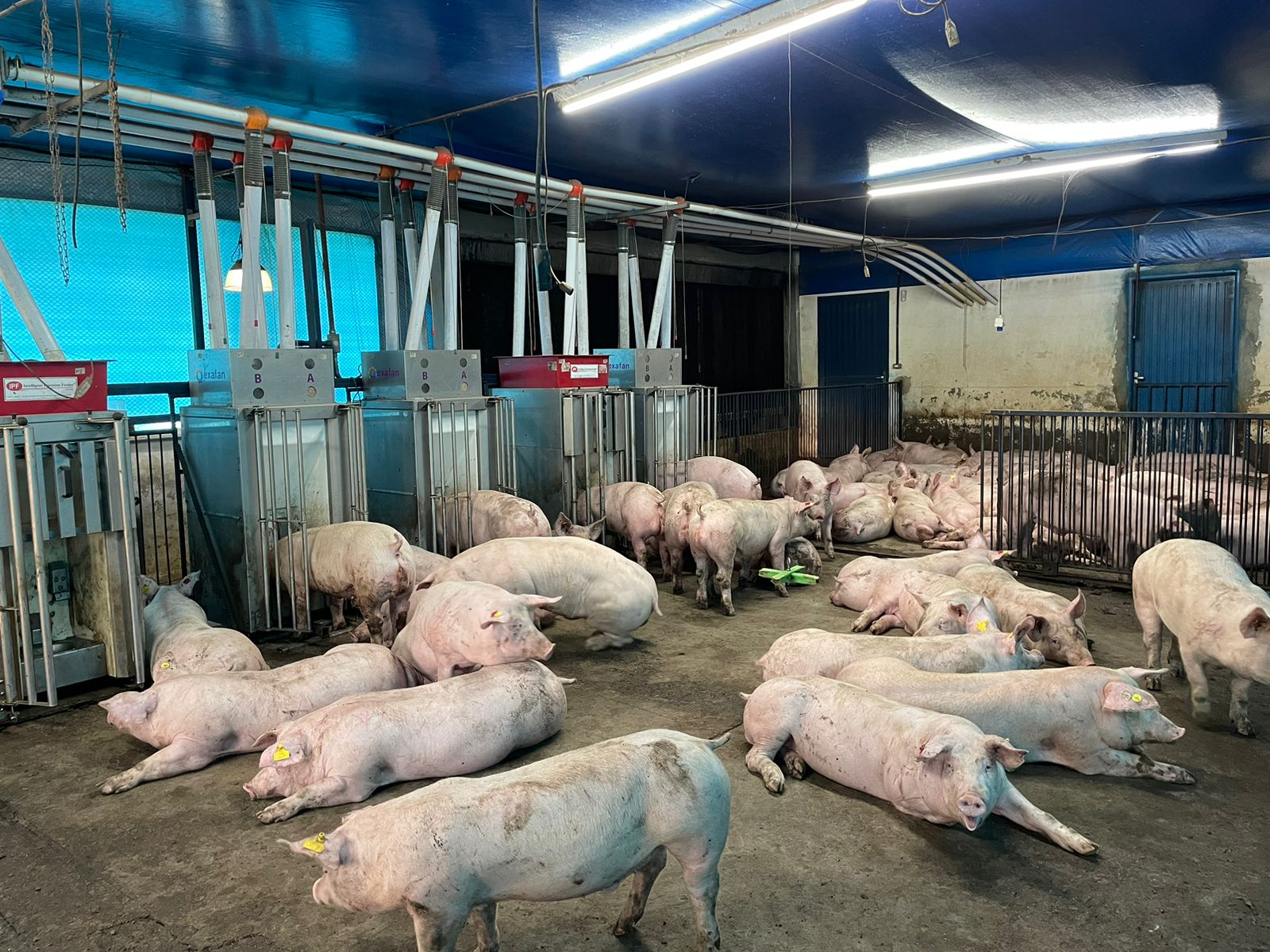

The research shows the importance of adjusting feed according to farming conditions (photo: LABSUI/FCAV-UNESP)
An experiment carried out by researchers at São Paulo State University showed that animals fed a diet enriched with threonine, methionine, and tryptophan were better able to resist health challenges that can compromise weight gain and increase mortality.
An experiment carried out by researchers at São Paulo State University showed that animals fed a diet enriched with threonine, methionine, and tryptophan were better able to resist health challenges that can compromise weight gain and increase mortality.

The research shows the importance of adjusting feed according to farming conditions (photo: LABSUI/FCAV-UNESP)
By Thais Szegö | Agência FAPESP – Supplementing the diets of pigs with functional amino acids enables the animals to better face health challenges caused by pathogenic microorganisms, which typically result in reduced weight gain and increased mortality rates.
This is the conclusion of an experiment conducted at the Laboratory for Pig Studies (LABSUI) and coordinated by Luciano Hauschild at the Faculty of Agricultural and Veterinary Sciences of the São Paulo State University (FCAV-UNESP) in Jaboticabal, Brazil. The research was supported by FAPESP through four projects (18/15559-7, 19/10843-1, 20/15797-5 and 23/08305-7).
The researchers selected 60 piglets in the so-called “nursery phase,” which includes animals weighing around six kilos and lasts around seven weeks. The animals were divided into two groups: one was fed according to the established nutritional requirements for this phase, and the other was fed a diet containing 20% more threonine, methionine, and tryptophan. These three amino acids are considered functional because they are related to metabolic processes that benefit the health, survival, and development of animals, mainly by helping the body’s immune response.
At the end of the nursery phase, when the piglets had reached a weight of around 28 kilos, they were subdivided into four experimental groups for the next phase, called “growth and finishing.” Among the animals that had previously received the standard diet, half continued the protocol, while the other half started receiving feed enriched with the functional amino acids. The same occurred in the group that had received the supplemented diet since the nursery phase: half continued the supplementation, while the other half started receiving a conventional diet.
The next step was to expose the four groups to health challenges for a month to mimic the adverse production conditions that can arise in commercial farming. This included mixing animals from different farms with different health statuses and cleaning the facilities infrequently to increase the load of microorganisms in the environment.
“The aim was to expose previously healthy animals to enteric and respiratory infections. These challenges tend to trigger defense mechanisms against pathogens they hadn’t had contact with before,” the researchers explain.
In addition, the pigs were inoculated with a bacterium from the Salmonella genus, which is commonly found on farms in tropical climates and causes enteric problems in animals. Therefore, the triggering of an immune response that modifies the metabolism of nutrients in their bodies was expected.
“In this way, we were able to assess the results of the strategy in preventive terms, before they underwent the experimental health challenge, in curative terms, during the challenge, and in both situations,” explains Ismael França, an agronomist and doctoral student in animal nutrition at UNESP in Jaboticabal and first author of the article.
Body composition
According to França, one of the aims of the experiment was to assess the impact of supplementation on the pigs’ productive performance and body composition (i.e., amount of protein, lipids, and mineral mass), as well as on biomarkers of the immune and metabolic response. The influence of these feeding strategies was also evaluated after the health challenge, until shortly before the animals were sent to slaughter, the so-called “finishing” phase.
It was possible to prove that pigs fed a continuous mixture of functional amino acids tended to reduce the amount of Salmonella in their feces after inoculation, which reduces barn contamination. In addition, those that received the supplementation continuously or curatively showed greater weight gain and better feed efficiency.
“These pigs also had a 30% gain in muscle protein deposition and between 20% and 30% in nitrogen retention efficiency, which means that there was better use of the nutrients coming from the feed, consequently reducing their excretion into the environment,” França highlights.
Another conclusion was that the animals fed a supplemented diet during the health challenge had higher body weights in the finishing phase. “Given all this, we were able to conclude that supplementation with threonine, methionine, and tryptophan as a curative or continuous strategy is highly effective in improving the performance and body composition of growing pigs under a health challenge,” França says.
According to the researcher, the selection of functional amino acid types was related to how easily pig producers can acquire these ingredients and thus adjust the levels of supplementation in the animals’ diets. “Our results can already be used in practice. In fact, the project was carried out in partnership with important companies in the private sector, which supported the development of the study and can now use our recommendations in the reality of their farms.”
According to Hauschild, França’s advisor, the research demonstrates the importance of adjusting feed according to the rearing conditions on different farms, as well as the importance of nutrients in preserving animal health.
The article “Dietary supplementation with functional amino acids improves the capacity of growing pigs to cope with a health challenge” can be read at: www.sciencedirect.com/science/article/abs/pii/S0377840124002761.
Republish
The Agency FAPESP licenses news via Creative Commons (CC-BY-NC-ND) so that they can be republished free of charge and in a simple way by other digital or printed vehicles. Agência FAPESP must be credited as the source of the content being republished and the name of the reporter (if any) must be attributed. Using the HMTL button below allows compliance with these rules, detailed in Digital Republishing Policy FAPESP.





